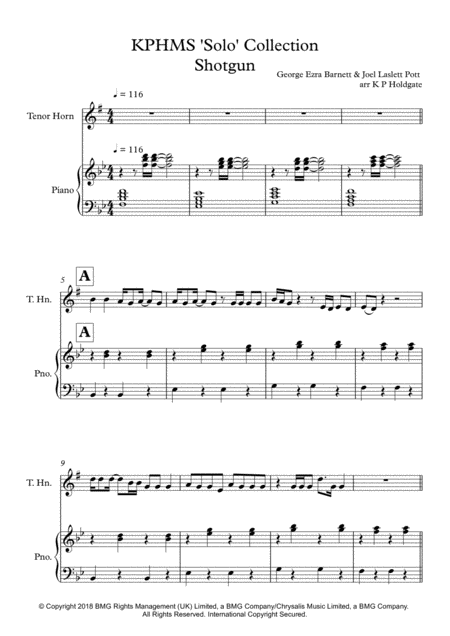Horn in E-Flat,Instrumental Solo,Piano - Level 2 - Digital Download SKU: A0.791213 By George Ezra. By Fred Gibson, George Barnet, George Barnett, and Joel Laslett Pott. Arranged by Kevin P Holdgate. Folk. Score and individual part. 12 pages. Kevin P Holdgate #5707481. Published by Kevin P Holdgate (A0.791213). KPHMS 'Solo' CollectionThis is a simple arrangement of a very popular song released in the summer of 2019. The solo is approximately Grade 2/3 ABRSM/Trinity and is a great diversion away from the syllabus.George Ezra is an English singer, songwriter, and guitarist. After releasing two EPs, Did You Hear the Rain? in November 2013 and Cassy O' in March 2014, Ezra rose to prominence with the release of his hit single, Budapest, which reached number one in several countries. His debut studio album, Wanted on Voyage, was released in June 2014, reaching number one in the UK and the top ten in seven other countries. It was also the third best-selling album of 2014 in the UK.His second studio album, Staying at Tamara's, was released in March 2018 and reached number one in the UK and the top ten in eight other countries. The second single from the album, Paradise, reached number two in the UK, while the next single, Shotgun, reached number one, becoming Ezra's first chart-topping single in the UK, Ireland, and Australia. In February 2019, he won the Brit Award for British Male Solo Artist.
